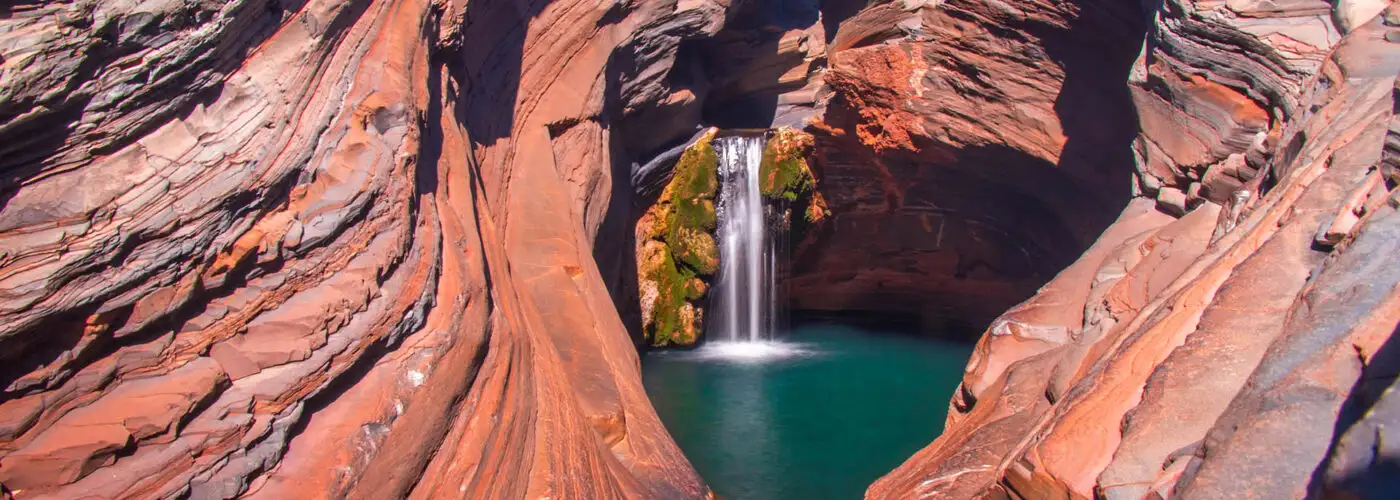From densely forested mountains and otherworldly rock formations to hidden waterfalls and pristine beaches, many of Australia’s most spectacular landscapes are preserved within its national parks. The term “Australia national parks” is a little confusing, as most of them are actually managed by states and territories rather than the federal government—but regardless of who’s in charge, the best national parks in Australia are a must-visit for any traveler who loves hiking, scenic drives, or outdoor adventure.
Below are a few of the most beautiful national parks in Australia, including both well-known spots and hidden gems.
Whitsunday Islands National Park, Queensland
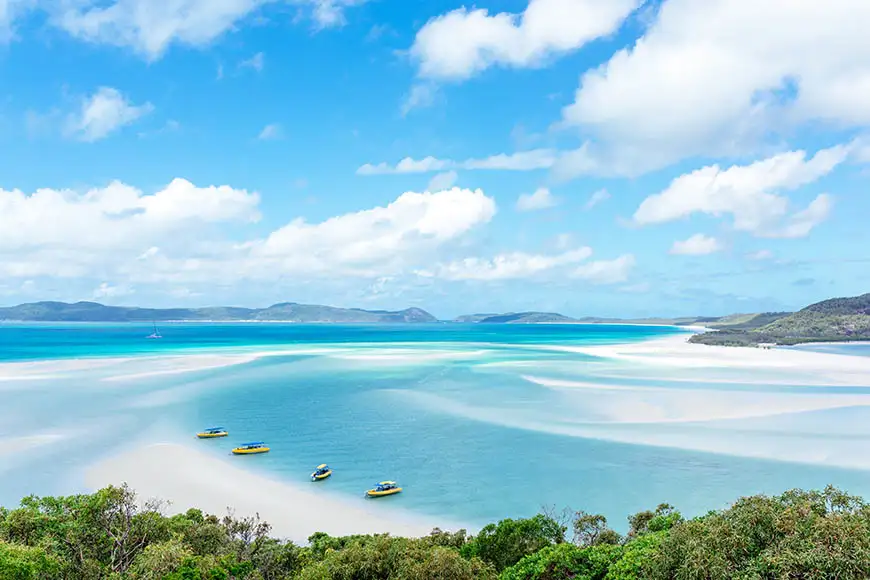
With its pure white sand and azure waters, Whitehaven Beach is the jewel in the crown of Whitsunday Islands National Park. The park is a mecca for snorkeling and scuba diving (the Great Barrier Reef isn’t far away), and there are several walking tracks with stunning coastal viewpoints. Not up for all that activity? Plant yourself on the beach to soak up the sunshine and sea breezes.
Karijini National Park, Western Australia
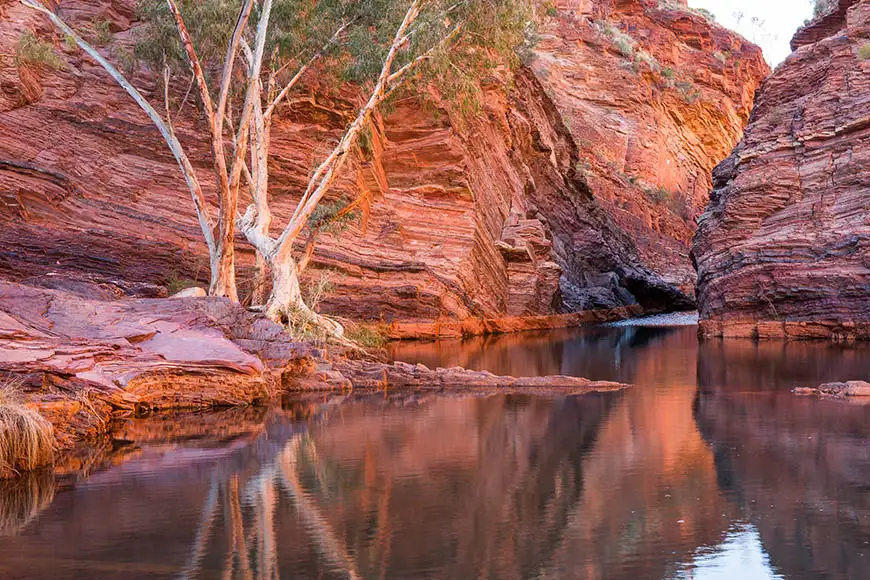
Rivers have carved dramatic gorges into Karijini National Park‘s ancient red rocks, which date back more than 2.5 billion years. Visitors can hike along the rims of the gorges or down into them, then cool off with a swim in one of the park’s natural pools.
Great Otway National Park, Victoria
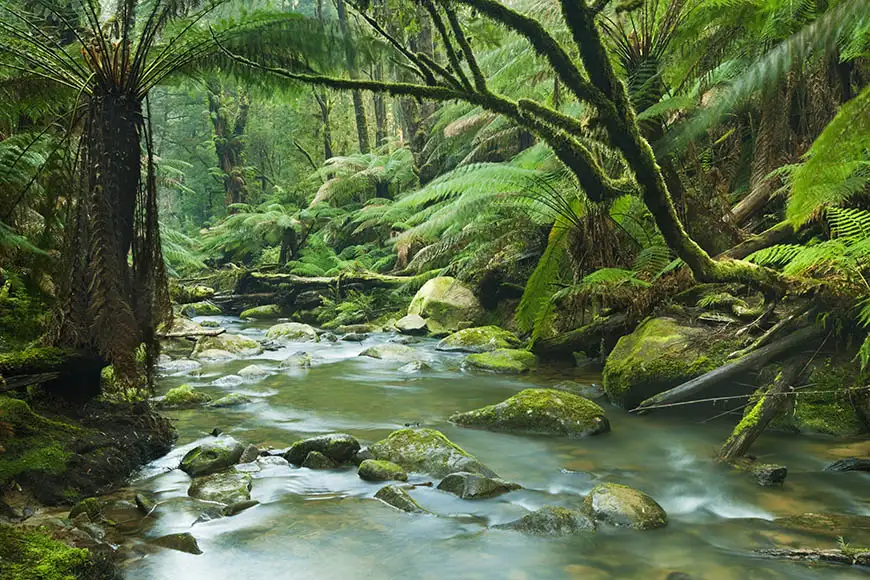
Encompassing part of Victoria’s famous Great Ocean Road, Great Otway National Park offers not only stunning coastal scenery but also lush forests verdant with ferns, moss, and eucalyptus trees. Hike the Great Ocean Walk to the 12 Apostles (located in neighboring Port Campbell National Park) to experience the coast up close, or take shorter walks through the forest to discover the park’s numerous waterfalls.
Nambung National Park, Western Australia
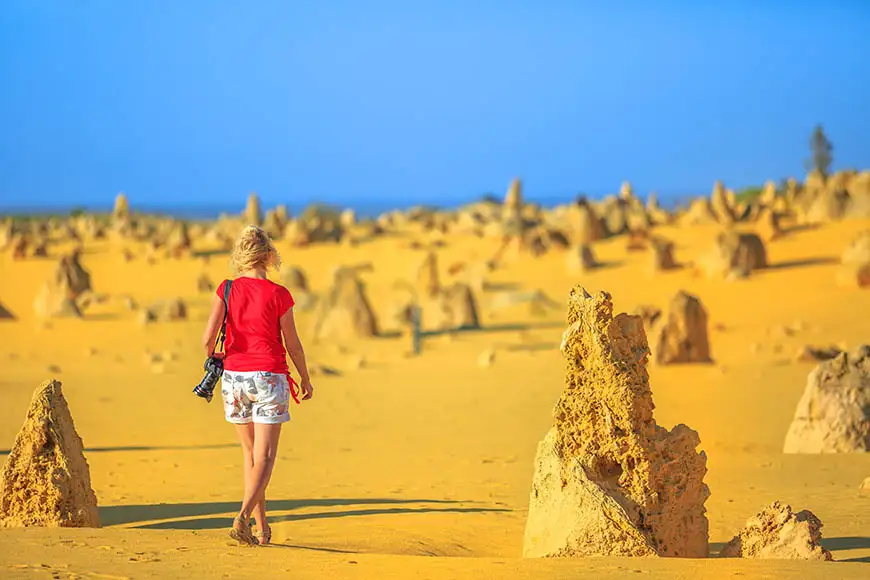
No visitor to Nambung National Park should miss the Pinnacles, where powerful winds have sculpted limestone into rock formations up to 11 feet high, jutting up into the surrounding desert like jagged teeth. But other parts of the park offer very different landscapes, including beaches and heathland full of wildflowers.
Maria Island National Park, Tasmania
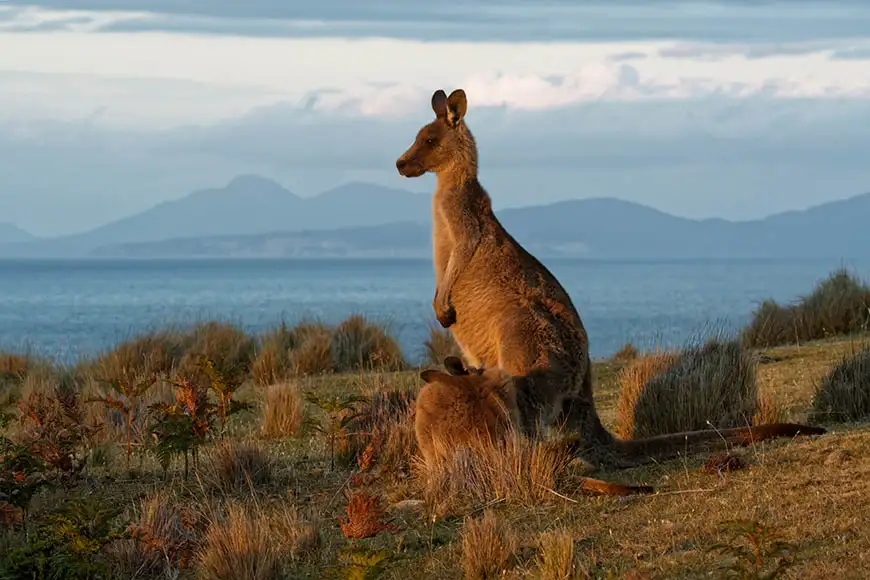
Maria Island is one of the best national parks in Australia not only because of its stunning natural landscapes—don’t miss the dramatic Painted Cliffs—but also because of its human heritage and unique wildlife. You can still see the remains of the convict community that once existed on this island; now its only residents are kangaroos, wombats, Cape Barren geese, wallabies, and the rare Tasmanian devil—many of whom were brought to this remote island to give them a safe habitat.
Uluru-Kata Tjuta National Park, Northern Territory
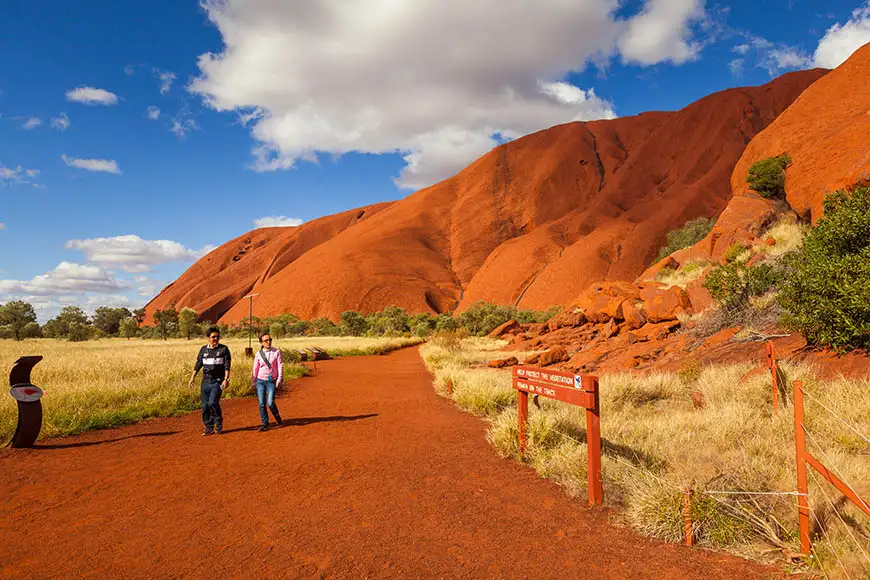
Uluru gets all the attention as one of Australia’s most recognizable icons, with its massive red bulk rising out of the desert, but many travelers don’t know that there’s another striking geological formation just 30 miles away: the domes of Kata Tjuta. Both are sacred to the local Aboriginal people, and together they give Uluru-Kata Tjuta National Park its name. Take time to walk around the base of the formations and admire the way the sunrise or sunset casts a glow over the red rock.
Royal National Park, New South Wales
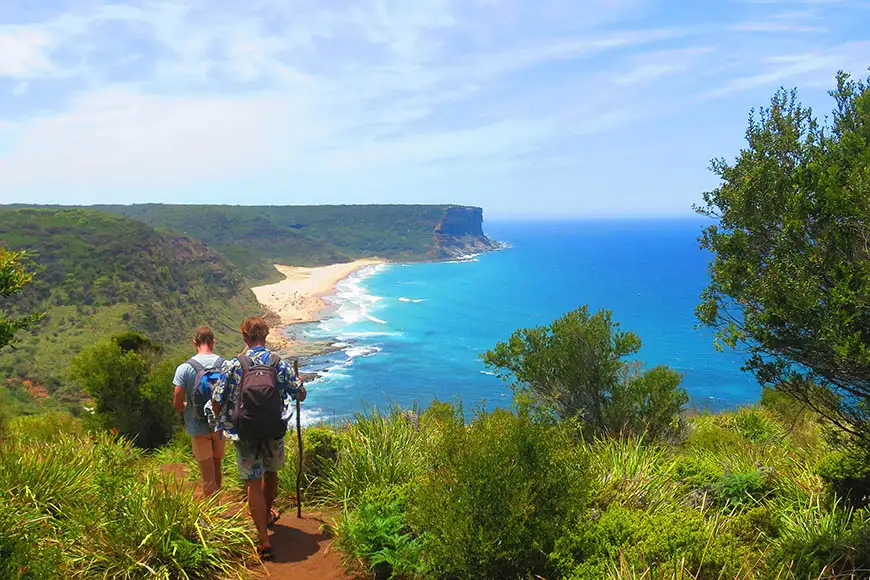
One of the world’s oldest national parks, Royal National Park was established in 1879. Though it’s an easy day trip from Sydney, the park’s diverse landscapes are worth a little more time. Visitors can explore beaches, sandstone cliffs, eucalyptus rainforests, waterfalls, and Aboriginal sites as they drive or hike around the park.
Naracoorte Caves National Park, South Australia
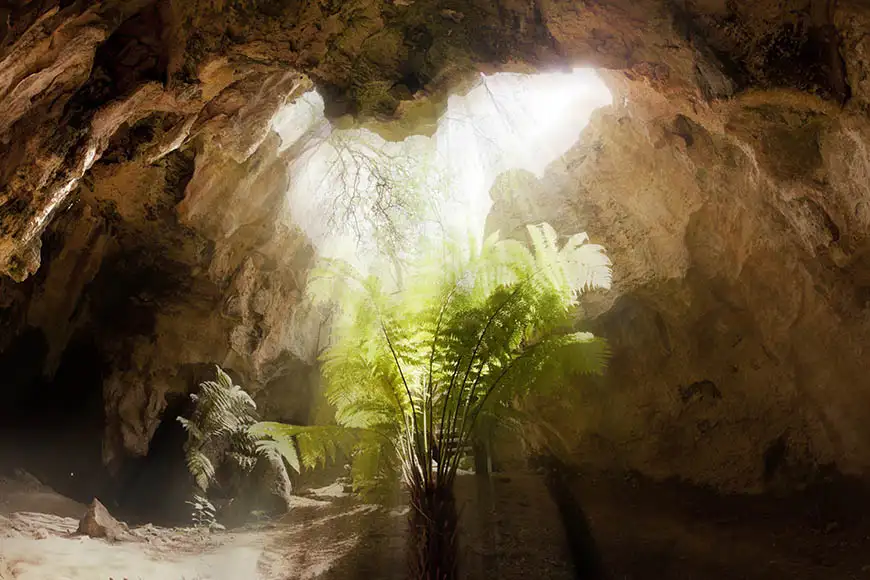
Four of the 28 caves at Naracoorte Caves National Park are open to the public, each with a unique focus. Victoria Fossil Cave features the remains of thousands of animals; Alexandra Cave has impressive stalactite and stalagmite formations; Blanche Cave is home to a large bat population; and Stick-Tomato Cave has two chambers open to self-guided public touring. Specialty tours focused on photography and adventure are also available.
Kakadu National Park, Northern Territory
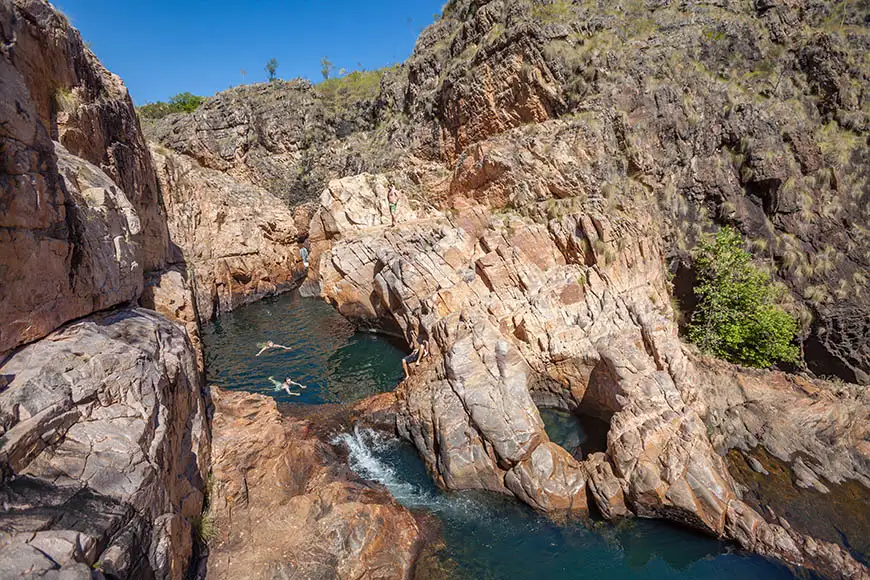
Stretching across more than 7,500 square miles, Kakadu National Park is the largest national park in Australia and takes at least a few days to explore. Highlights include swimming in the plunge pools around Gunlom Falls, seeing Aboriginal rock art along the path to the Ubirr lookout, and scanning for birdlife on a cruise through Yellow Water Billabong.
Blue Mountains National Park, New South Wales
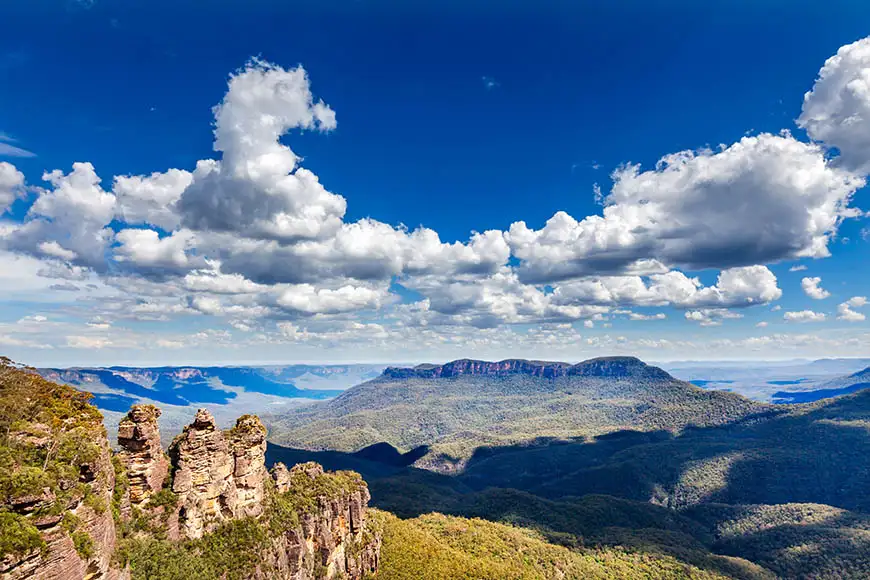
Blanketed in seemingly endless eucalyptus forest, Blue Mountains National Park is a popular day trip or weekend escape from Sydney. Many visitors base themselves in Katoomba, where you can view the famous Three Sisters rock formation and ride in a cable car nearly 900 feet above the forest at Scenic World—but the whole park is full of hiking trails and scenic drives to explore.
Springbrook National Park, Queensland
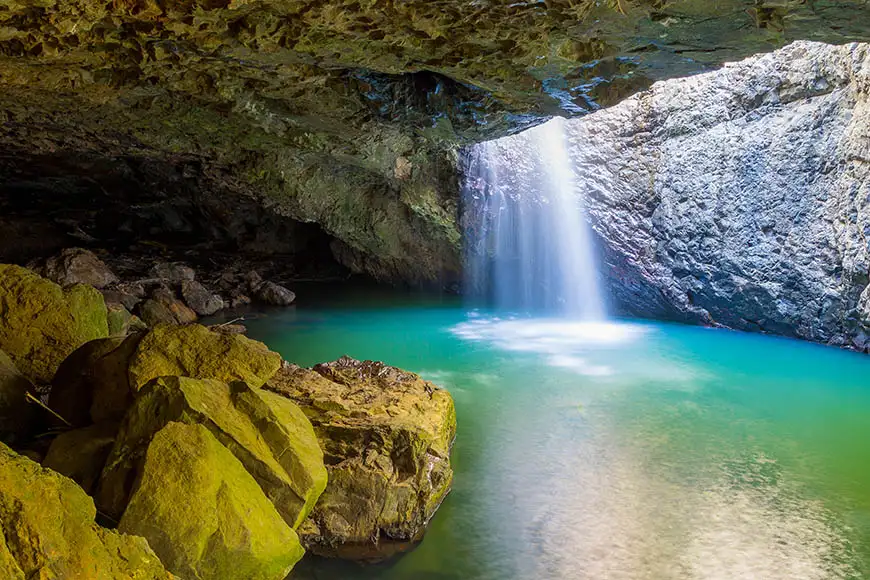
Waterfalls, streams, and creeks carve their way through verdant rainforest at Springbrook National Park, part of the Gondwana Rainforests of Australia World Heritage Area. Don’t miss the short hike to the Natural Bridge (a unique rock arch over a waterfall); consider coming back after dark to see the glow worms that live in the area. Numerous other walking trails are available in the Springbrook plateau section of the park.
Purnululu National Park, Western Australia
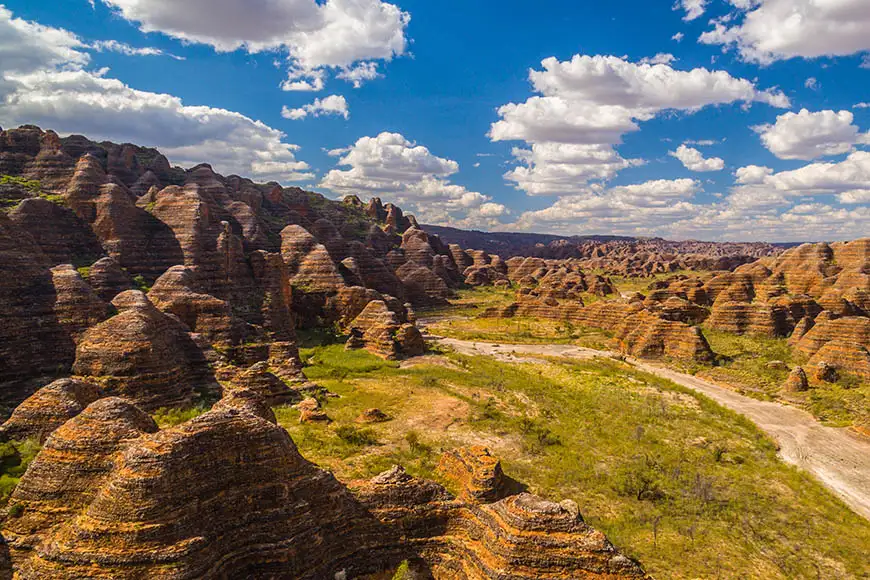
The Bungle Bungle Range is the main draw at Purnululu National Park, a UNESCO World Heritage site that’s part of Western Australia’s remote Kimberley region. These otherworldly banded sandstone domes are shaped like giant beehives and believed to be hundreds of millions of years old, sculpted by streams and rivers eroding the delicate rock. You can walk among the Bungle Bungles or take a scenic flightseeing ride to appreciate them from a whole new angle.
Grampians National Park, Victoria
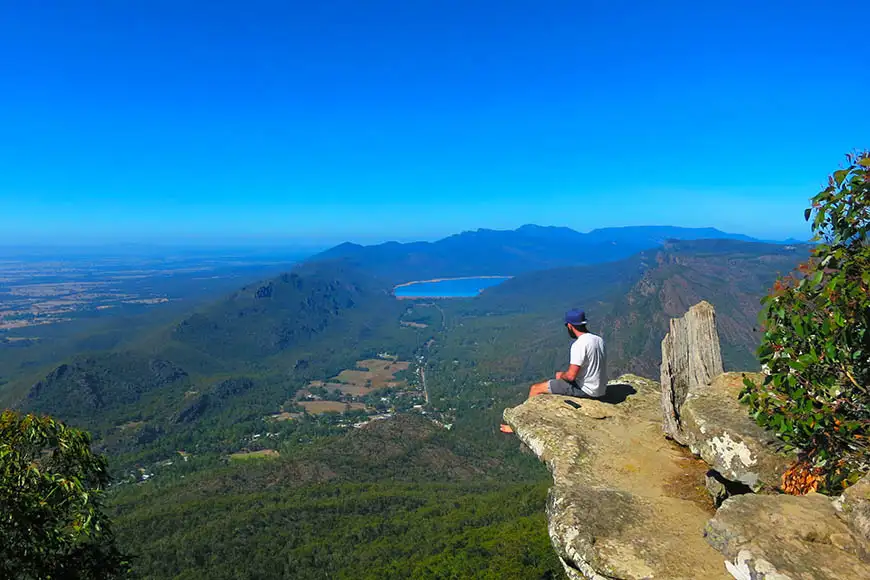
One of the most beloved Australia national parks, Grampians is famous for waterfalls, Aboriginal rock art paintings, and sweeping mountain views. Popular hikes include the routes up to the Pinnacle lookout, the climb down to the base of MacKenzie Falls, and the multi-day Grampians Peak Trail, which lets you sample the myriad views the park has to offer.
Cradle Mountain-Lake St. Clair National Park, Tasmania
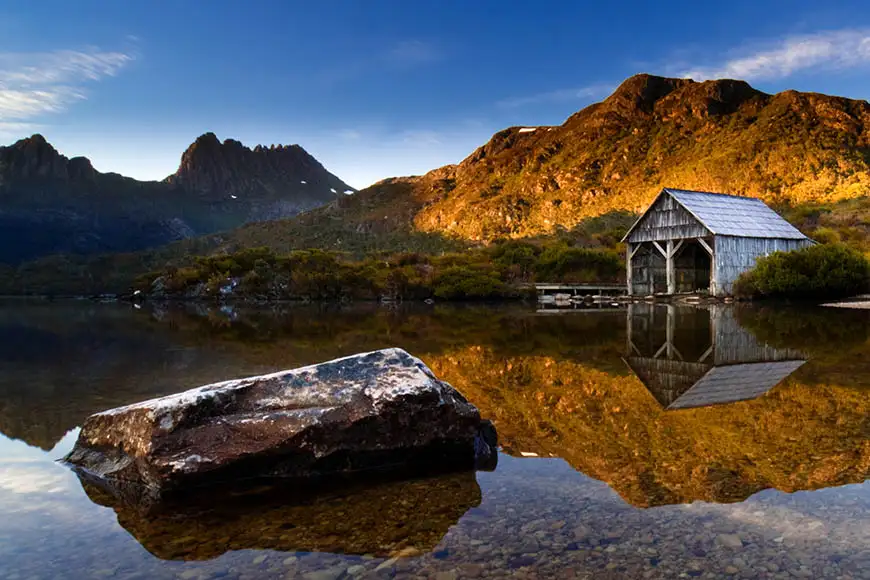
One of Tasmania’s most popular spots for hiking and natural beauty, Cradle Mountain-Lake St. Clair National Park protects craggy mountains, pristine lakes, and mossy rainforests. As its name suggests, the park consists of two separate areas: Cradle Mountain in the north and Lake St. Clair in the south—and they’re both worth a visit. Don’t miss the Dove Lake circuit trail for views of iconic Cradle Mountain itself.
Coffin Bay National Park, South Australia
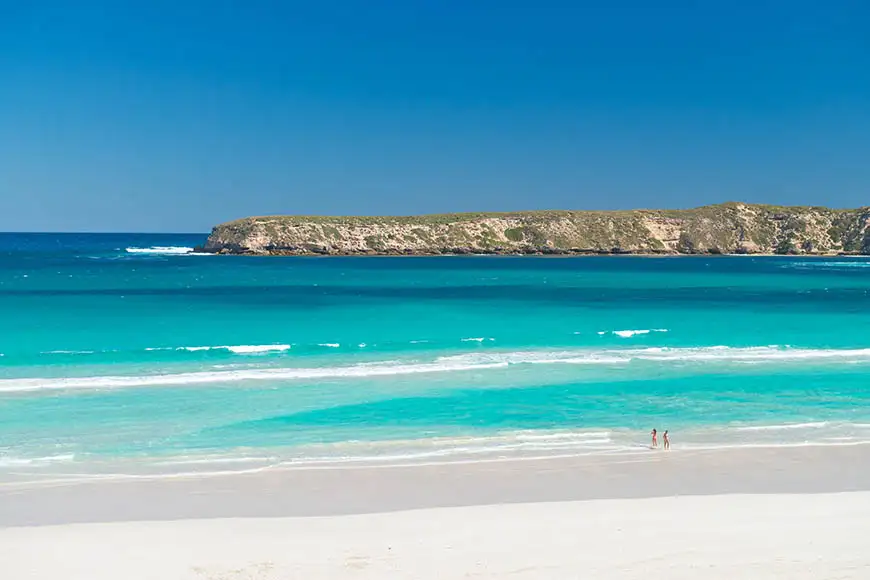
Want to get away from it all? Head to the windswept shores of Coffin Bay National Park, where certain areas are only accessible via four-wheel-drive vehicle. Popular activities include relaxing or fishing on Almonta Beach, hiking or kayaking around Yangie Bay, and surfing off of Mullalong Beach.
More from SmarterTravel:
- Top 25 Ways to Save on Australia Travel
- What to Pack for Australia: 35 Essentials
- Everything You Need to Know About Getting Around Australia
Follow Sarah Schlichter on Twitter @TravelEditor for more travel tips and inspiration.
We hand-pick everything we recommend and select items through testing and reviews. Some products are sent to us free of charge with no incentive to offer a favorable review. We offer our unbiased opinions and do not accept compensation to review products. All items are in stock and prices are accurate at the time of publication. If you buy something through our links, we may earn a commission.
Related
Top Fares From Columbus, OH
Today's Top Travel Deals
Brought to you by ShermansTravel
Shop and Save with Country Inns...
Patricia Magaña
 Hotel & Lodging Deals
Hotel & Lodging Deals
$229 -- Chicago: Discounted Rates and...
Francesca Miele
 Hotel & Lodging Deals
$229+
Hotel & Lodging Deals
$229+
$188 -- Honolulu: Save on Oceanview...
Abigail Lamay
 Hotel & Lodging Deals
$188+
Hotel & Lodging Deals
$188+
